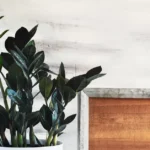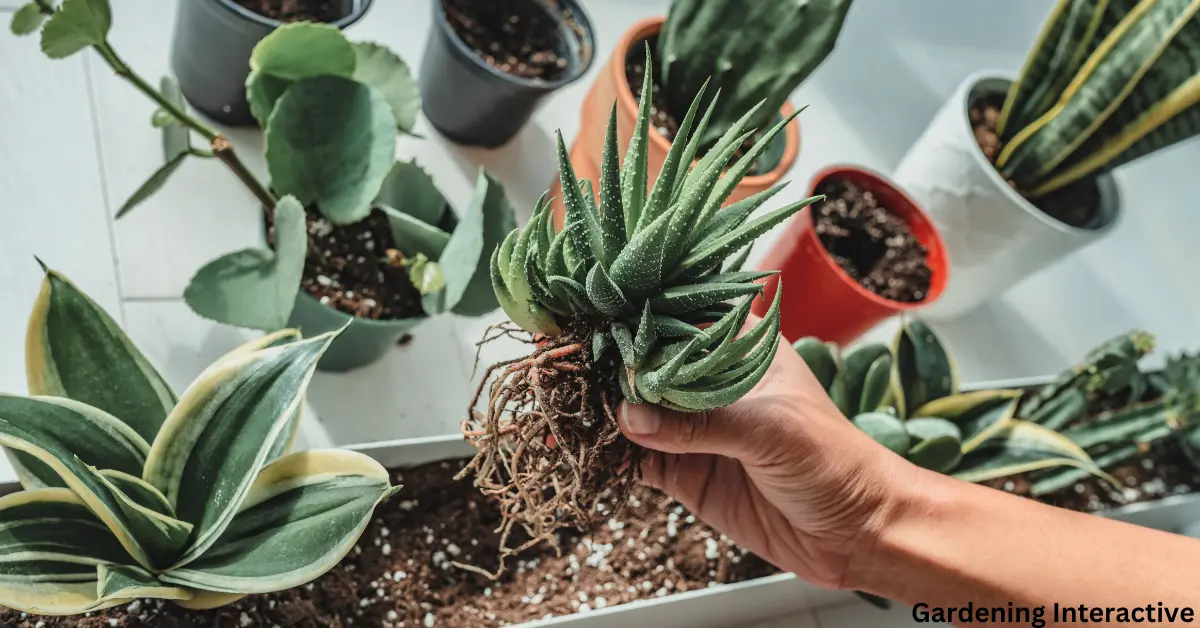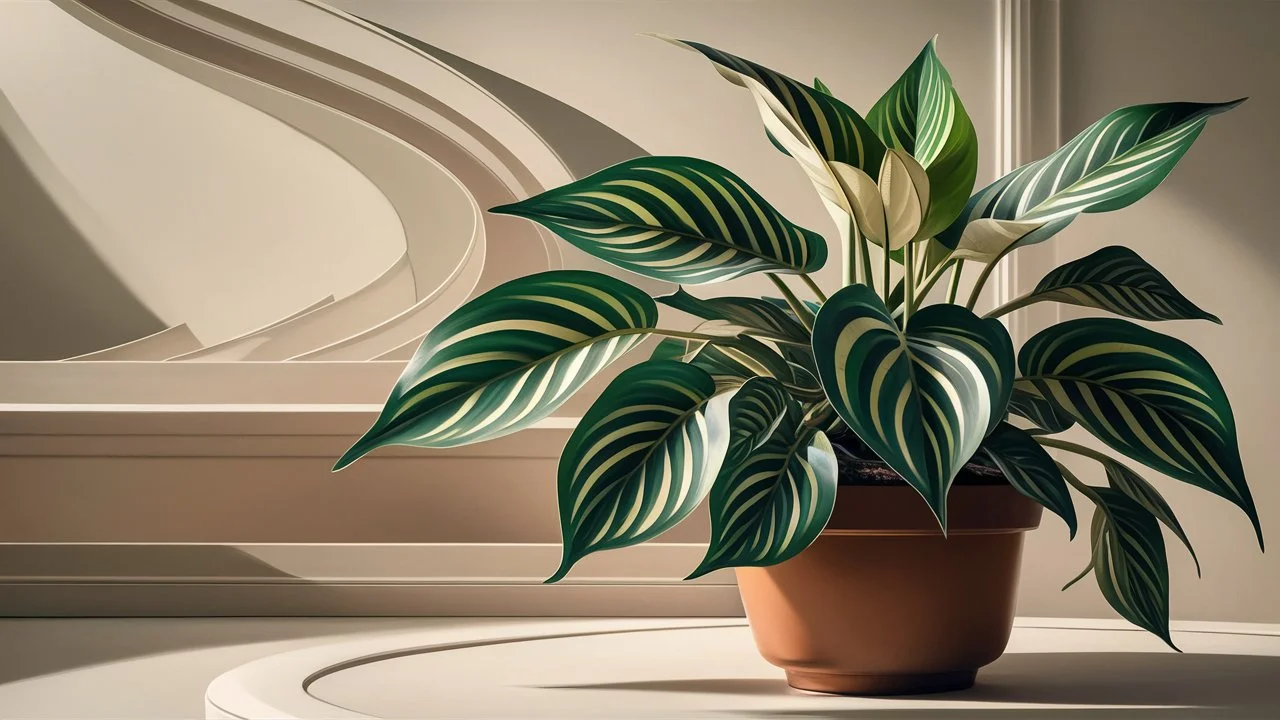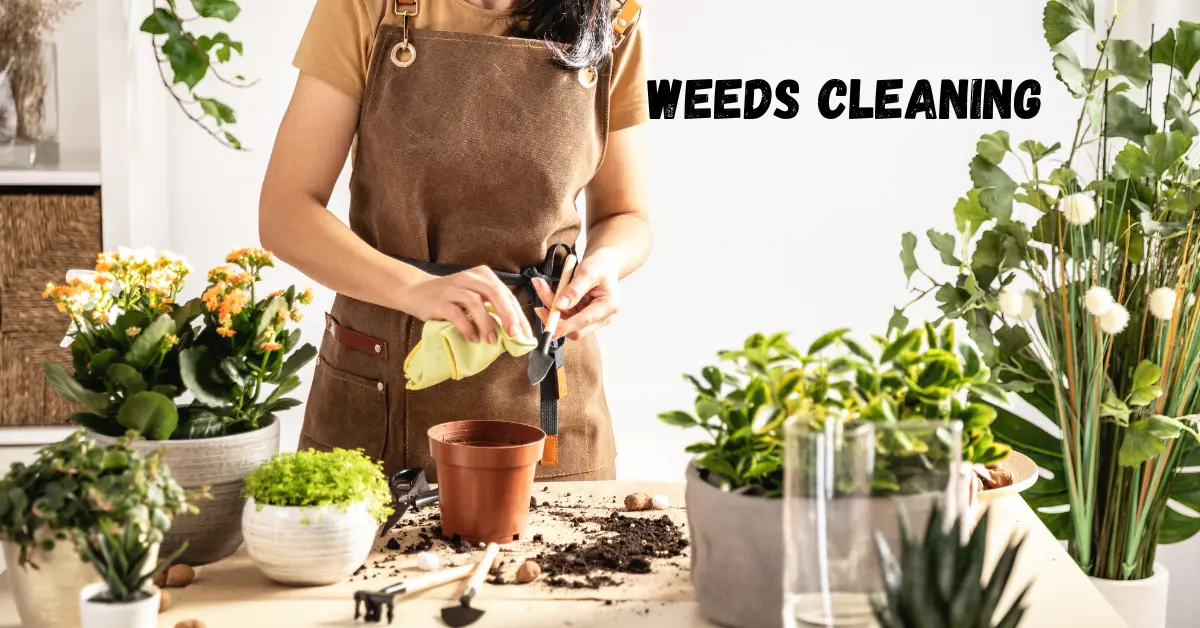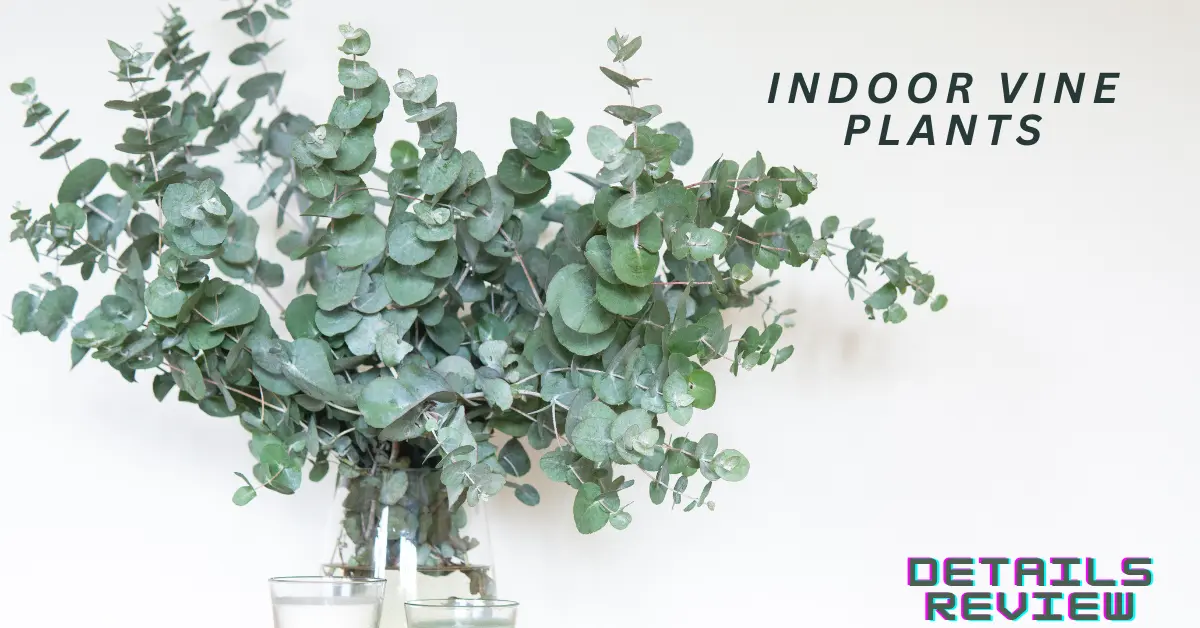
12 Gorgeous Indoor Vine Plants That Will Easy to Grow
- Mitford Rakib
- March 30, 2024
- BEGIN YOUR ADVENTURE, Featured, Indoor plants, Plants
- 0 Comments
Table of Contents
ToggleAn In-Depth Details Review about Indoor Vine Plants
Intro:
Nowadays, indoor gardening has become an interesting hobby for plant lovers, transforming the living or dining spaces into a green area. Among them, indoor vine plants have become a popular option for their enormous beauty and also have a space-saving charm. In this article, There will be a detailed information guide about 12 indoor vine plants, providing an overview of the plant, growing system, planting season, plant originality or species, soil preparation and lastly care requirements. Let’s start the journey to find the perfect vine plants for your beautiful indoor garden.
1. English Ivy (Hedera helix):
Beginning with the English Ivy, the green companion of your indoor gardening also scientifically known as Hedera helix, this plant has some different charms with the ability of great home decorator among the plants. This plant adds a touch of simplicity to any space of the room. The trailing vines of 🌿 English Ivy and the spread lobed leaves begets a refreshing air to both indoors and outdoors. Not just about the inner beauty of the plant also the low cost maintenance of this plant pulls many gardeners into consideration. English Ivy is a unique plant for both seasonal and regular plant parents because of its adaptability. This plant has magic when it comes to the green elegance of your space. So, as of English Ivy will be a great choice for you to begin with.🌱
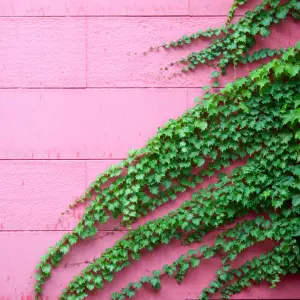
- Species: Hedera helix
- Colors: Varied shades of green
- Season: Year-round
- Growth: Trailing vines with heart-shaped leaves
- Soil: Well-draining potting mix
- Care: Moderate light, evenly moist soil, occasional misting
2. Devil’s Ivy (Epipremnum Aureum):
Devil’s Ivy also known as Epipremnum Aureum is a kind of plant that has vibrant green leaves, and negotiates in any adorning space. It is also called as the “Queen of the Easy to Grow Plants. This plant is a botanical delight but resilient with a low maintenance system and grows in different environments. It is an easy growing plant both for seasonal and regular plant parents. In this specific paragraph of this article you will get to know Devil’s Ivy plants’ graceful beauty and the mystery of the name. Explore its incredible versatility and learn why, in the realm of indoor gardening, this green gem has come to represent timeless beauty. So grab a seat, because we’re about to take you on a lovely journey into the heart of Devil’s Ivy, where botanical sophistication meets simplicity.

- Species: Epipremnum Aureum
- Colors: Bright green
- Season: Year-round
- Growth: Cascading vines with heart-shaped leaves
- Soil: Well-draining, rich potting mix
- Care: Low to bright indirect light, allow soil to dry between watering
3. String of Pearls (Senecio Rowleyanus):
A distinctive trailing succulent, the String of Pearls is also called the Curio Rowleyanus. This plant, if I had to choose just one, would be my heart plant. It is the most exquisite houseplant, in my opinion!The plant is native to the southernmost point of Africa, and plant parents like it because of its distinctiveness. A spreading succulent called String of Pearls features greenish balls for leaves that resemble peas!
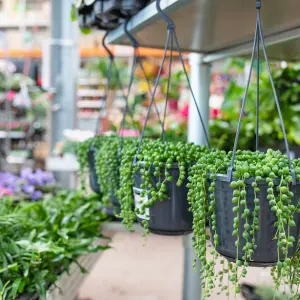
- Species: Senecio rowleyanus
- Colors: Green
- Season: Spring and summer
- Growth: Trailing succulent vines with spherical leaves
- Soil: Cactus or succulent mix
- Care: Bright light, well-draining soil, infrequent but thorough watering
4. Heartleaf Philodendron (Philodendron Hederaceum):
The heart leaf philodendron, often known as the sweetheart plant or vine (Philodendron Hederaceum). We think it’s lovely, affordable, and really simple to cultivate, so it’s pretty much perfect. With its lovely heart-shaped leaves and graceful, vine-like structure, this philodendron thrives in most interior settings. It’s actually more tolerant of low indoor humidity than a lot of other houseplants that are tropical. Even better, with proper care, heart leaf philodendrons can live for many years. Leaves of the heart leaf philodendron are glossy green.
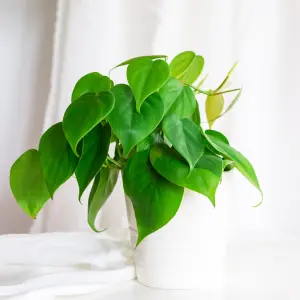
- Species: Philodendron hederaceum
- Colors: Deep green
- Season: Year-round
- Growth: Heart-shaped leaves on trailing vines
- Soil: Well-draining potting mix
- Care: Low to bright indirect light, keep soil consistently moist
5. Pothos (Epipremnum pinnatum):
When a Pothos cultivar called Epipremnum pinnatum ‘Albo-Variegata’ reaches maturity, its variegated leaves—green and white—become fenestrated. It’s one of the most exquisite and costly Pothos varieties as well as one of the rarest. This Pothos initially reminds me a lot of Monstera Albo or Thai Constellation. It’s also a superior option to both, despite not receiving the same level of attention. It requires far less pompous care, grows more quickly, and is cheaper.
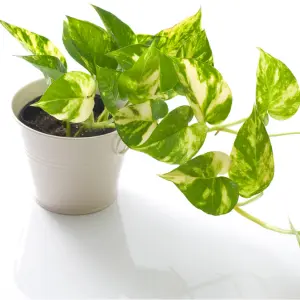
- Species: Epipremnum pinnatum
- Colors: Variegated green and yellow
- Season: Year-round
- Growth: Cascading vines with heart-shaped leaves
- Soil: Well-draining potting mix
- Care: Low to moderate light, allow soil to dry between watering
6. Spider Plant (Chlorophytum Comosum):
Chlorophytum Comosum, or spider plant, is regarded as one of the most versatile houseplants. Spider plants are among the easiest plants to maintain; these lovely green perennials are cultivated outside in warm climates and are also popular indoors as hanging basket plants around the country. From a crown of fleshy roots, these plants produce clusters of ribbony leaves that might be plain green or variegated with white or yellow lengthwise lines. It has tiny white flowers.
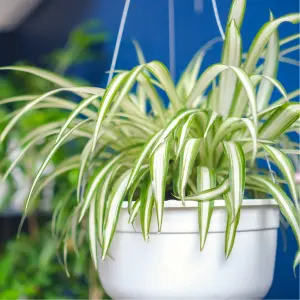
- Species: Chlorophytum Comosum
- Colors: Green with white stripes
- Season: Year-round
- Growth: Arching leaves with Spiderettes
- Soil: Well-draining potting mix
- Care: Indirect light, keep soil evenly moist
7. Hoya Carnosa (Hoya carnosa):
Hoya Carnosa is a highly prized houseplant that comes from Eastern Asia and Australia. It is sometimes referred to as the porcelain flower or wax plant. This perennial, vine-like plant, which is semi-succulent, is prized for its beautiful blossoms, unusual curled tendrils, and waxy foliage.The fragrant, star-shaped blossoms can release a sticky sap and are grouped in parachute-shaped clusters. Plant fans of all skill levels will find Hoya Carnosa to be a suitable addition because of its firm, succulent-like leaves and its adaptability and ease of growth, even in situations where it is neglected a little.
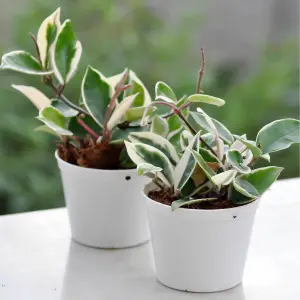
- Species: Hoya carnosa
- Colors: Green with waxy texture
- Season: Year-round
- Growth: Twining vines with clusters of star-shaped flowers
- Soil: Well-draining orchid mix
- Care: Bright indirect light, allow soil to dry between watering
8. Monstera Deliciosa (Monstera deliciosa):
The Monstera genus, officially known as Monstera Deliciosa, is a relatively low maintenance plant. They are known as the Swiss Cheese Plant or Philodendron Split Leaf because of the holes that they make in their leaves as they become older. They are native to southern Mexico and Panama. Monstera leaves have holes as a result of growing up in a jungle where overhanging vegetation prevents sunlight. Thus, the holes serve to let light reach both the top and bottom of the leaves.
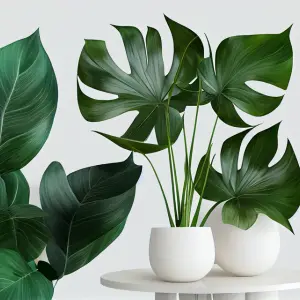
- Species: Monstera deliciosa
- Colors: Dark green with unique splits and holes
- Season: Year-round
- Growth: Broad, heart-shaped leaves on climbing vines
- Soil: Well-draining potting mix
- Care: Bright, indirect light, keep soil consistently moist
9. Cissus Rhombifolia (Cissus Rhombifolia):
Cissus Rhombifolia requires little maintenance. Also referred to as grape ivy, the lovely oak-shaped leaves and tendrils of this plant are perfect for hanging to add a classic Greek taverna feel to your house. Its easy going attitude towards light, watering, and humidity makes it adaptable to a wide range of environments. Indoor greenscapes are enhanced by the texture of its downy stems, unfurling silvery new growth, and mature, deep green leaves.
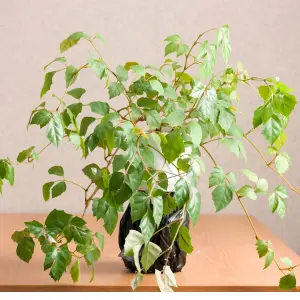
- Species: Cissus Rhombifolia
- Colors: Dark green
- Season: Year-round
- Growth: Trailing vines with diamond-shaped leaves
- Soil: Well-draining potting mix
- Care: Moderate light, allow soil to dry between watering
10. Tradescantia Zebrina (Tradescantia zebrina):
A common herbaceous perennial houseplant is Tradescantia zebrina. It features intriguing variegated leaves featuring purple undersides that are striped in shades of green, white, and gray. The ovate leaves clasp the base of the stem. Rarely do little lavender-purple blooms with three petals appear indoors. The term “inch plant” comes from the fact that leaf buds along the stem are often spaced one inch apart. accepts a variety of growth environments. Does best in slightly damp but well-drained soil, moderate room temperatures, and filtered sunlight. Cut back on wintertime irrigation. In order to promote bushy growth, pinch back. Every spring, plants can be severely trimmed back, and in the summer, they can be brought outdoors to sit on a covered patio.
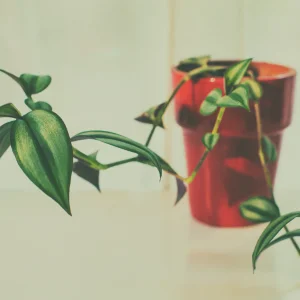
- Species: Tradescantia zebrina
- Colors: Green with silver stripes on top and purple underside
- Season: Year-round
- Growth: Trailing vines with lance-shaped leaves
- Soil: Well-draining potting mix
- Care: Bright, indirect light, keep soil consistently moist
11. Jasmine (Jasminum Sambac):
Native to tropical regions of Asia, the Jasmine Sambac, also known as Arabian Jasmine, is a hiking evergreen shrub in the Oleaceae family. Plants of the jasmine variety are popular choices for both indoor and outdoor spaces, mostly because of their prolific blooms during the warmer months. In addition, they are utilized in tea, aromatherapy, traditional medicine, and perfumes. When grown in ideal circumstances, jasmine Sambac plants may grow to a maximum length of nine feet and produce many blooms annually. Typically, their blooms begin to open in the late hours of the night and end by the next morning.
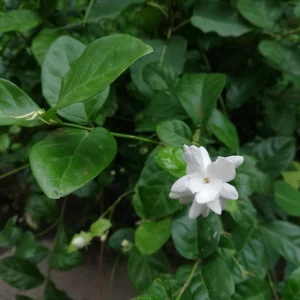
- Species: Jasminum Sambac
- Colors: White
- Season: Spring and summer
- Growth: Twining vines with fragrant, star-shaped flowers
- Soil: Well-draining potting mix
- Care: Bright light, keep soil consistently moist, provide humidity
12. Wandering Jew (Tradescantia pallida):
Beautiful houseplants like Wandering Jew will provide brightness to every space in your house. Despite what many people think, Wandering Jew is actually a common title for a number of different Tradescantia species, not just one plant. Tradescantia Fluminensis “Quicksilver,” Tradescantia pallida “Purple Heart,” and Tradescantia zebrina “Tricolor,” three popular houseplants with a multitude of common names, are among them.
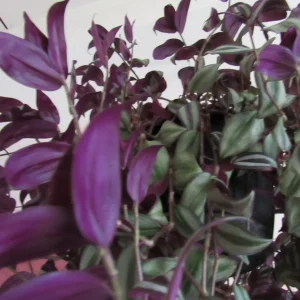
- Species: Tradescantia Pallida
- Colors: Purple with silver stripes
- Season: Year-round
- Growth: Trailing vines with lance-shaped leaves
- Soil: Well-draining potting mix
- Care: Bright, indirect light, keep soil consistently moist
Ending Note:
Vines indoors add beauty and a sense of nature to your living areas. An indoor garden that is lush and colorful can be enjoyed year-round by choosing the right types and giving them the attention they need. Try out various combinations to make your own green haven that will offer happiness and peace to your house.
Frequently Asked Questions (FAQ):
Q1: Can these indoor vine plants survive in low-light conditions?
A: Of course, Most of the mentioned plants, like Devil’s Ivy, Pothos, and snake plant etc. can survive in low-light conditions. But you need to provide some passive sunlight for the overall best health and growth condition.
Q2: Are these houseplant vines suited for novice gardeners?
A: Definitely! The majority of the plants on the list—such as Heartleaf Philodendron, English ivy, and Spider Plant—are renowned for being hardy and little maintenance. For people who are new to gardening or are searching for low-maintenance plants, these are ideal.
Q3: How frequently should I give these houseplants some water?
A: Every plant has a different frequency of irrigation. While plants like Spider Plant and Wandering Jew flourish with continually moist soil, others, like Snake Plant and ZZ Plant, demand less regular watering. Make sure the soil is moist before applying any water.
Q4: Can these vines be grown together in the same pot?
A: It is important to take into account the specific requirements of each plant, even though pairing certain types with comparable care requirements can result in an aesthetically pleasing arrangement. To encourage harmonic growth, make sure they have similar preferences for soil, water, and light.
Q5: Do these indoor vine plants require special fertilizers?
A: maintained, water-soluble fertilizer applied in the spring and summer will work well for the majority of these plants. Recommendations for fertilizer dose are provided on the packaging; do not over fertilize as this could damage the plants.

